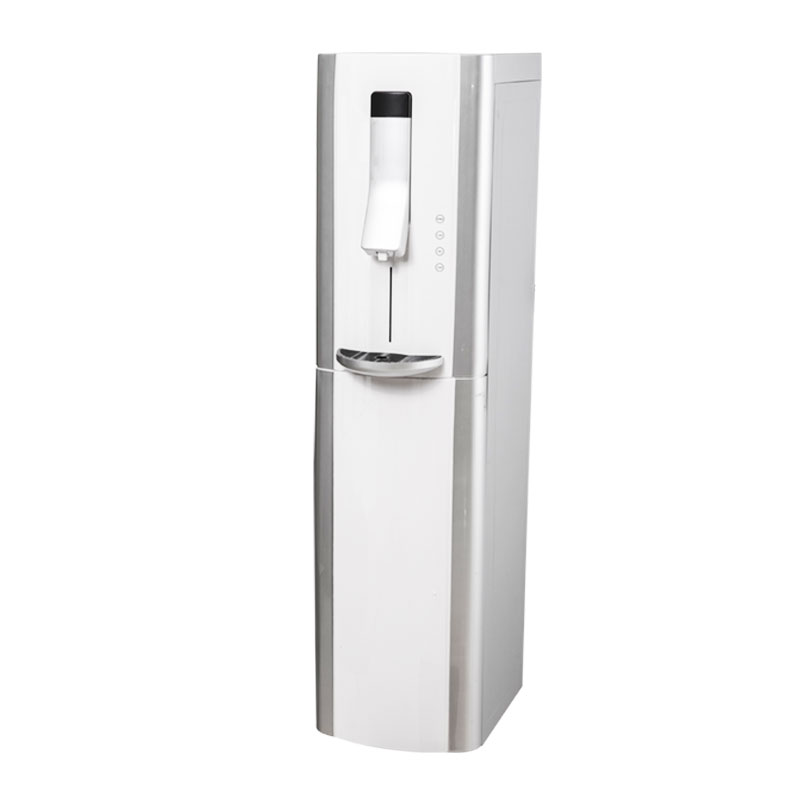Maintaining the cleanliness and hygiene of water dispensers is an important part of ensuring drinking water safety. Water dispensers are not only a source of water for homes and offices, but also an important part of a healthy lifestyle. As the frequency of use increases, bacteria, dirt and scale may accumulate inside the water dispenser and its components, which in turn affects the water quality and the normal operation of the equipment. Therefore, regular and comprehensive cleaning and maintenance are particularly important.
Before cleaning the water dispenser, users should make adequate preparations. First, be sure to disconnect the power supply to ensure that no accidents occur during the cleaning process. Next, prepare the necessary cleaning tools and materials, including warm water, neutral detergent or white vinegar, sponges or soft cloths, disinfectant wipes, gloves and clean water. In addition, if there is residual water in the water dispenser, it should be drained first to ensure that the cleaning process goes smoothly.
The first step in the cleaning process is to clean the sink. Users can mix warm water with neutral detergent or diluted white vinegar in a 1:1 ratio, use a sponge or soft cloth to dip in the cleaning solution, and carefully wipe the inside of the sink, especially corners and edges where dirt is easily accumulated. After cleaning, be sure to rinse the sink thoroughly with clean water to remove any detergent or vinegar residue, and wipe it with a clean cloth to ensure that the inside of the sink is completely dry.
Next, it is equally important to clean the faucet. The faucet is a high-risk area for bacterial growth. It is recommended to disinfect it with disinfectant wipes or diluted bleach (usually a ratio of 1:10). After disinfection, it must be rinsed with clean water to remove chemical residues. At the same time, check whether the faucet is leaking and replace it in time if necessary.
Cleaning the outside of the water dispenser is also a link that cannot be ignored. Use a damp cloth and neutral detergent to wipe the outer shell of the water dispenser, including the control panel and buttons. Do not use highly corrosive detergents to avoid damaging the surface of the device. The bottom and back areas are also prone to dust and dirt accumulation. It is recommended to use a vacuum cleaner or a damp cloth to clean and keep the environment around the device clean.
For water dispensers that use bottled water, it is recommended to clean the outside of the bucket every time the bucket is replaced. The bucket can be cleaned with warm water and neutral detergent, and it should be dried before being placed on the water dispenser. If conditions permit, clean the inside of the bucket regularly, using diluted white vinegar or a special detergent to ensure thorough rinsing.
If the water dispenser is equipped with a filtration system, users should check the status of the filter regularly. It is generally recommended to replace the filter every three to six months, and specific information can be found in the product manual. When replacing the filter, be sure to follow the manufacturer's instructions and ensure that the new filter is firmly installed to ensure the safety and cleanliness of the water quality.
Finally, after cleaning, ensure that the inside of the water dispenser is completely dry and can be placed in a well-ventilated environment to prevent bacterial growth. Regular cleaning and maintenance not only helps to extend the service life of the water dispenser, but also provides users with safe and healthy drinking water. Through scientific and reasonable cleaning and maintenance measures, users can effectively improve the performance of the water dispenser and ensure the quality of drinking water, thereby promoting the health of the home and office environment.











